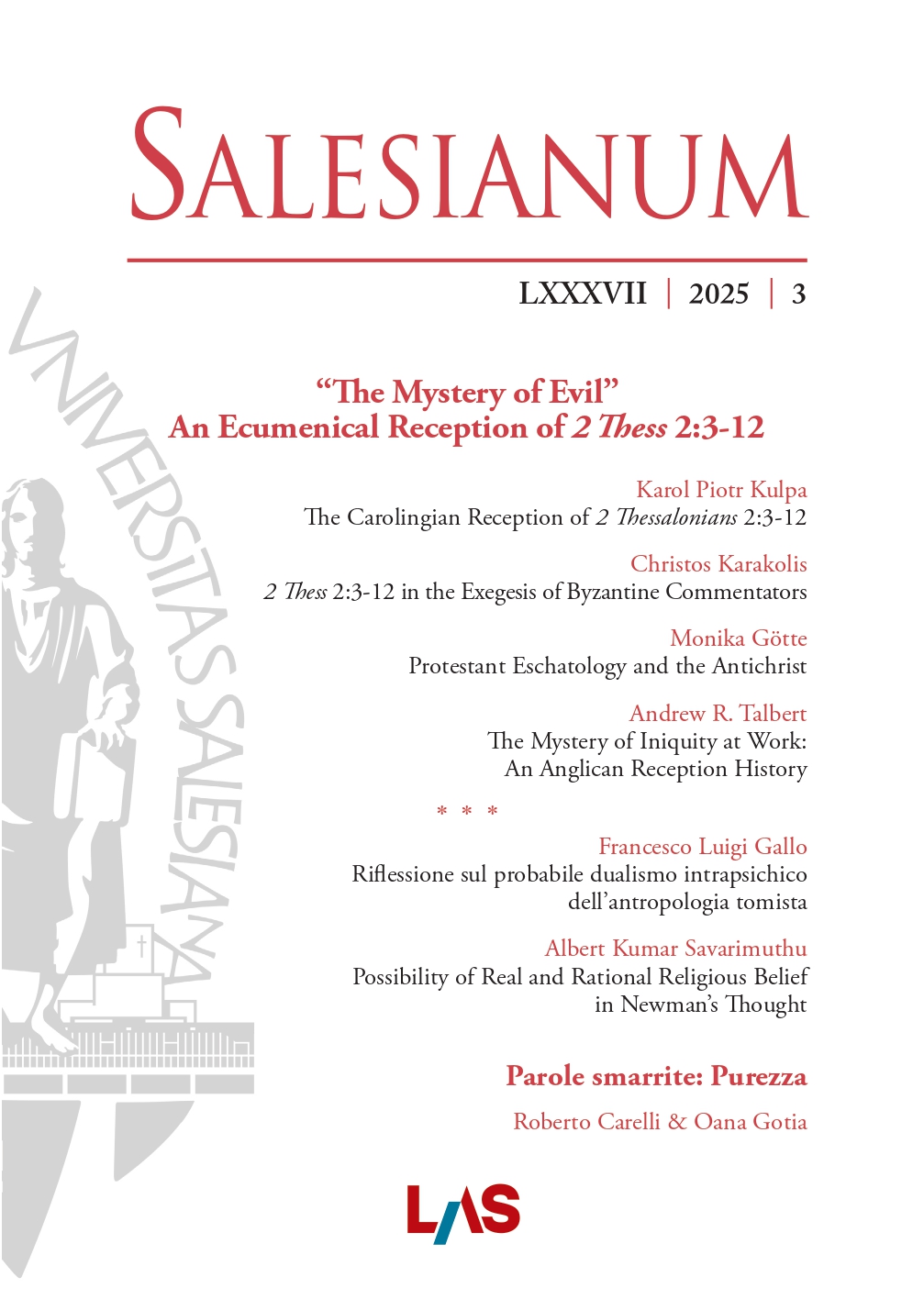Zur Christologie des Konzils von Nicaea
On the Christology of the Council of Nicaea
Salesianum vol. 87 (2025) n. 2, 296-328Sezione: Studia
Sommario
Das Symbolum Nicaenum, zusammen mit den angehängten Anathemata, in dem die Christologie des Konzils von Nicaea ihren Ausdruck findet, hat ursprünglich die Form eines Taufbekenntnisses, in das Formulierungen eingefügt wurden, die gegen den Arianismus gerichtet sind. So ist zunächst ein kurzer Blick auf die Entwicklung der Glaubensbekenntnisse zu richten, ehe die einzelnen Aussagen des zweiten Artikels des Symbols über Jesus Christus und dann die Anathemata untersucht werden. Wesentliche Positionen des Arianismus müssen zusammengestellt werden, damit leichter offenkundig wird, wogegen sich die christologischen Sätze des Nicaenums richten und so ihre Aussage-Absicht erkennbar wird. Zu beachten ist, dass die Forschung in jüngster Zeit skeptischer geworden ist, was Arius tatsächlich vertreten hat, denn aus den erhaltenen Texten ergibt sich kein widerspruchsfreies Bild. So nimmt man an, dass es eine Gruppe von Klerikern ist, die sich insgesamt zusammenfassen lässt unter der Bezeichnung Arianismus. Wir konzentrieren uns auf das Konzil von 325; die Nachgeschichte von Nicaea und die Vielzahl der Synoden mit ihren Glaubensbekenntnissen und der darin enthaltenen Christologie ist hier nicht mehr Thema.
Parole chiave
Christologie | Glaubensbekenntnis | Symbolum Nicaenum | Arius | Homoousios
Abstract
The Symbolum Nicaenum, together with the appended anathemas, which express the Christology of the Council of Nicaea, originally took the form of a baptismal creed into which formulations directed against Arianism were inserted. Therefore, a brief look at the development of the creeds is needed before examining the individual statements of the second article of the symbol about Jesus Christ and then the anathemas. Key positions of Arianism have to be gathered in order to see what the Christological statements of the Nicene Creed are directed against, and thus to discern their intended message. Recent scholarship has become more skeptical about what Arius actually stood for, because the surviving texts do not provide a consistent picture. It is therefore assumed that there is a group of clerics who can be collectively summarized under the name Arianism. We concentrate on the Council of 325; the aftermath of Nicaea and the multitude of synods with their creeds and the Christology contained therein is no longer a topic here.
Keywords
Christology | Creed | Arius | Symbolum Nicaenum | Homoousios


